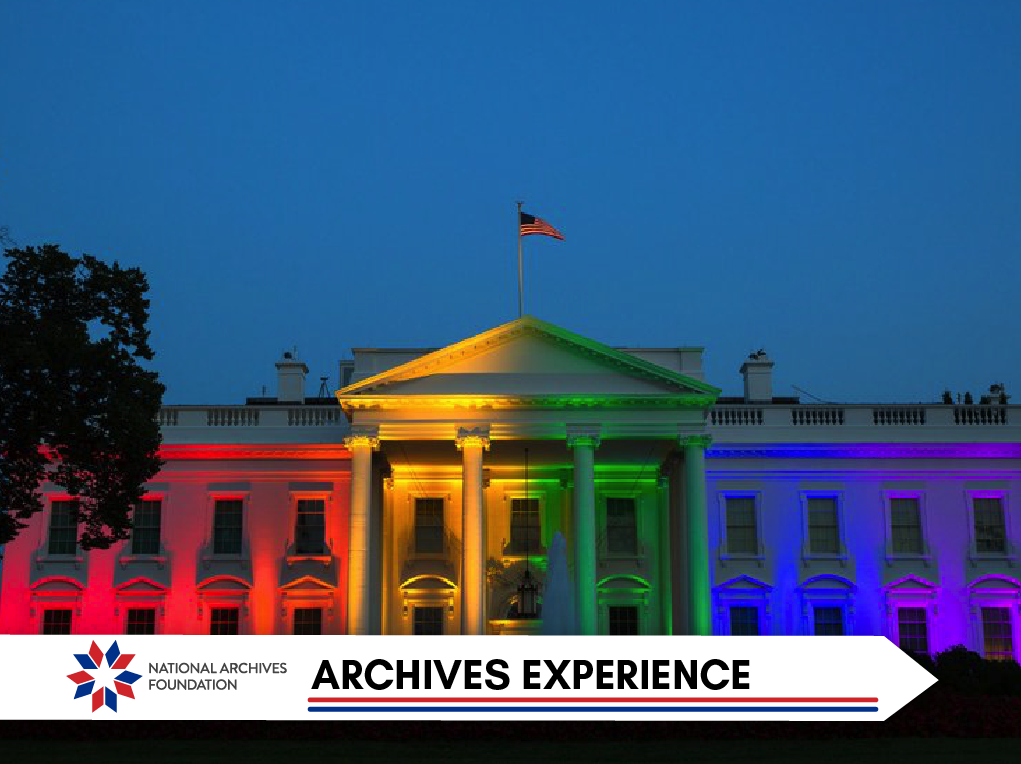Archives Experience Newsletter - June 20, 2023
The Lavender Scare
The world changed rapidly in the wake of World War II. Suddenly, events halfway across the globe were affecting Americans at home, none more than the rise of the Soviet Union. This environment of fear had people concerned with one thing: loyalty.
But as the Cold War intensified, loyalty was no longer enough. The question became, “Who is suitable to work for the federal government?” When the LGBTQ+ community became conflated with Communism, they became the targets of a more intense and destructive investigation.
This week, we’re shedding light on the lesser-known companion investigation of the Red Scare…
In this issue
History Snack
Red Refresher
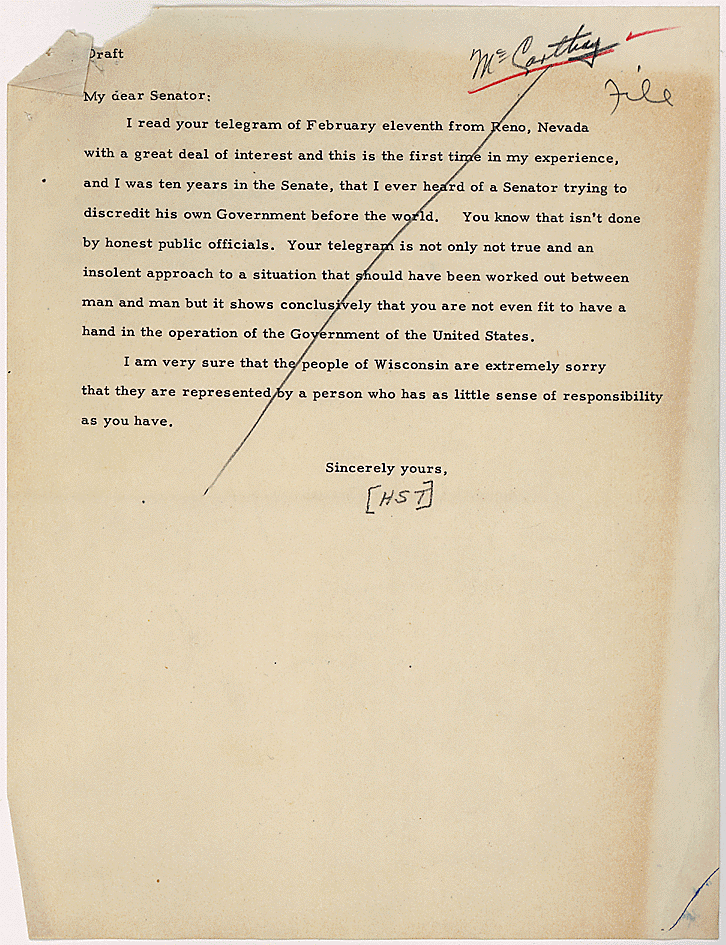
Truman’s telegram to Joseph McCarthy
NARA’s Educator Resources
You probably learned about the Red Scare in your high school history class. Senator Joseph McCarthy takes advantage of the post World War II anti-Communist sentiment to “hunt down” suspected Communists in the federal government. At first, McCarthy had momentum not only in eradicating Communists from the federal government, but also from Hollywood and the creative industries as well.
As the Cold War heated up and fear increasingly gripped the nation, McCarthy was only able to expand his hunt for Communists and wield his power to control Congress’ agenda. A designated committee, called the House Un-American Activities Committee (HUAC), was formed to conduct hearings to intensely question suspected Communists one by one. But almost as quickly as McCarthy was able to whip up paranoia, it all came crashing down. It turns out that McCarthy’s threat of secret Communists was pretty empty. By the late 1950s, former president Harry Truman said the committee and McCarthy’s actions were “the most un-American thing in the country today.”
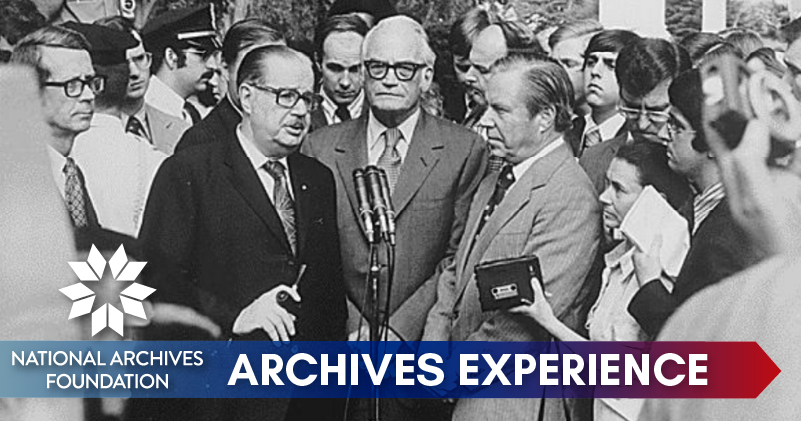
View the full The Loyalty Test newsletter issue
If you want a more in-depth refresher on the Red Scare before you continue reading, visit our past issue, “The Loyalty Test.”
In the Grip of Fear
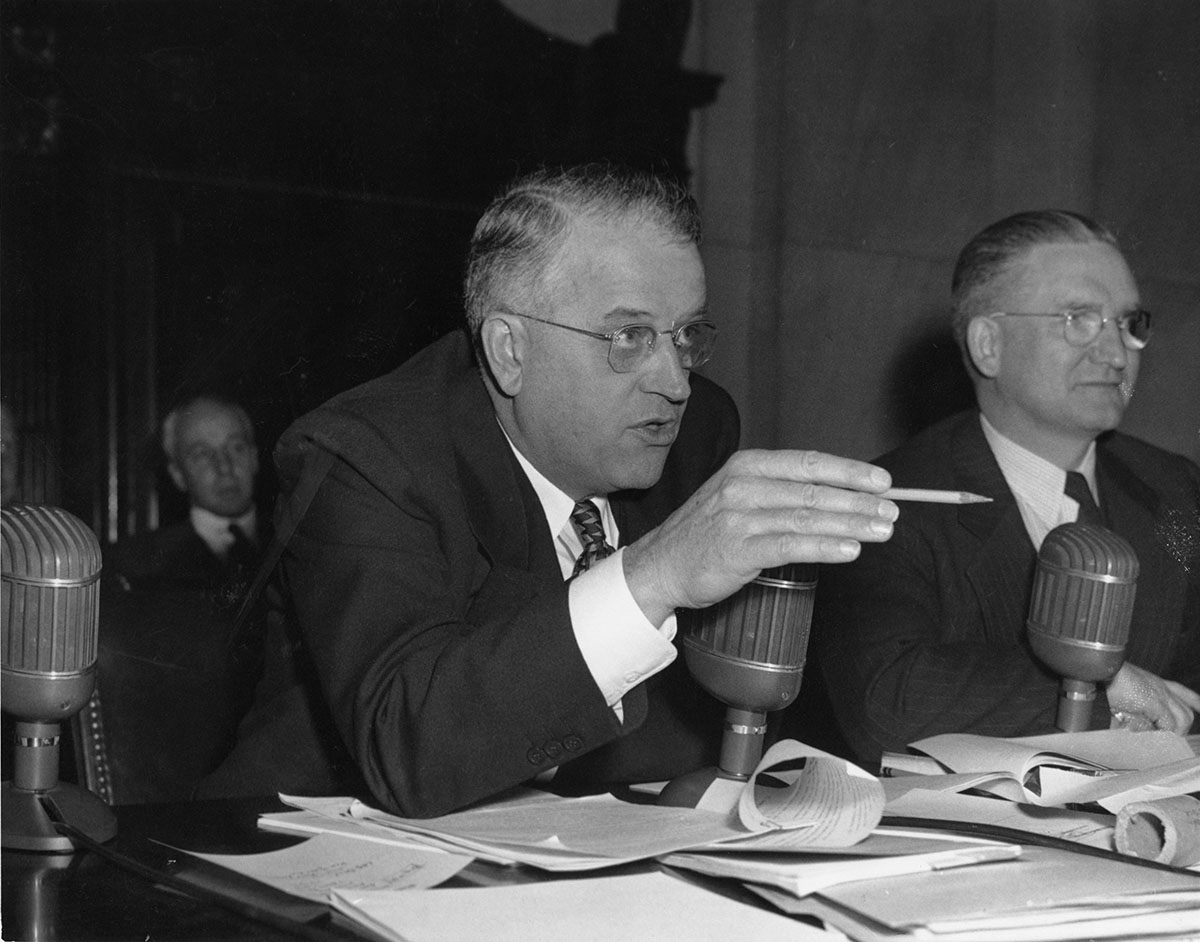
Senators Kenneth Wherry and J. Lister Hill conduct a hearing to investigate homosexuality
Source: NARA’s Prologue Magazine
Suspected Communists were not the only ones McCarthy’s investigations targeted. The general public was becoming increasingly aware of homosexuality, but this did not make them more accepting. In fact, the general awareness only fueled the sex-crime and morality panic that America was facing at the time. Wrap that up with the paranoia of the Red Scare, and the LGBTQ+ community becomes inextricably linked with Communists as a group to fear.
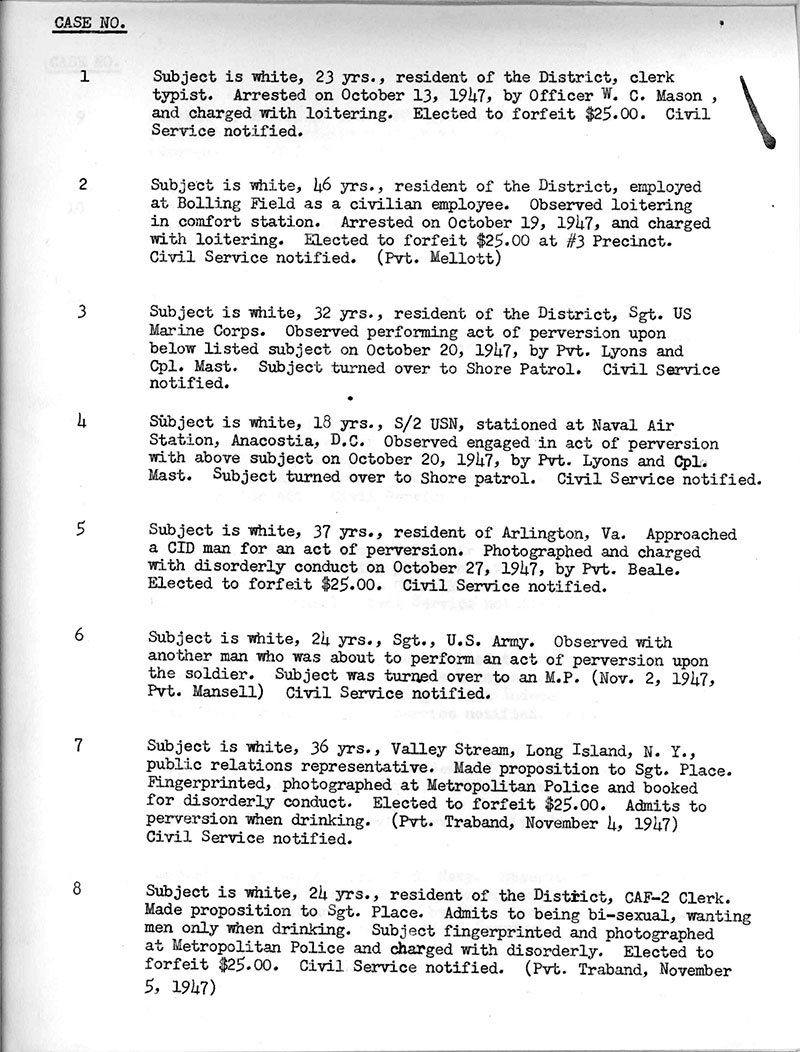
Description of subjects identified as homosexuals in the workplace–subjects either resigned or were terminated
Source: NARA’s Prologue Magazine
It didn’t help that McCarthy himself didn’t hesitate to fan the flames of panic. In his famous speech to Congress when he claimed he had a list of 205 known Communists employed by the State Department, he singled out two of the cases that had to do with homosexuality. McCarthy theorized that both Communists and homosexuals had “peculiar mental twists” that caused their deviant behavior. This rhetoric kicked off a much longer, destructive, and effective hunt for LGBTQ+ federal employees that’s now known as the Lavender Scare.
In March 1950, two Senators made up an entire committee to investigate the presence of homosexuals in the federal government. It was a bipartisan effort between Republican Senator Kenneth Wherry and Democratic Senator J. Lister Hill. As they began digging into federal departments that employed suspected homosexuals, the government responded by more intensely monitoring their employees’ behavior. As suspected homosexuals were accused, they faced an impossible choice: resign or be publicly outed on the Congressional record
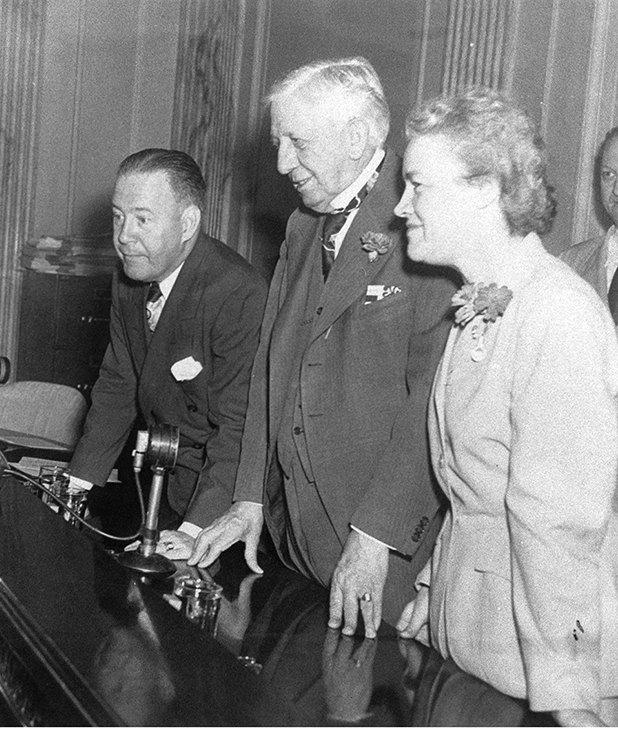
Senators Herbert O’Connor, Clyde Hoey, and Margaret Chase Smith, who were all on the committee to investigate employment of gay people in government
Source: NARA’s Prologue Magazine
The fact that a two-man Congressional committee triggered the resignation of about 100 members of the LGBTQ+ community only reaffirmed the threat of homosexuality and bolstered the need for investigation. Compared to the Red Scare, which produced little to no results, the Lavender Scare seemed legitimate.
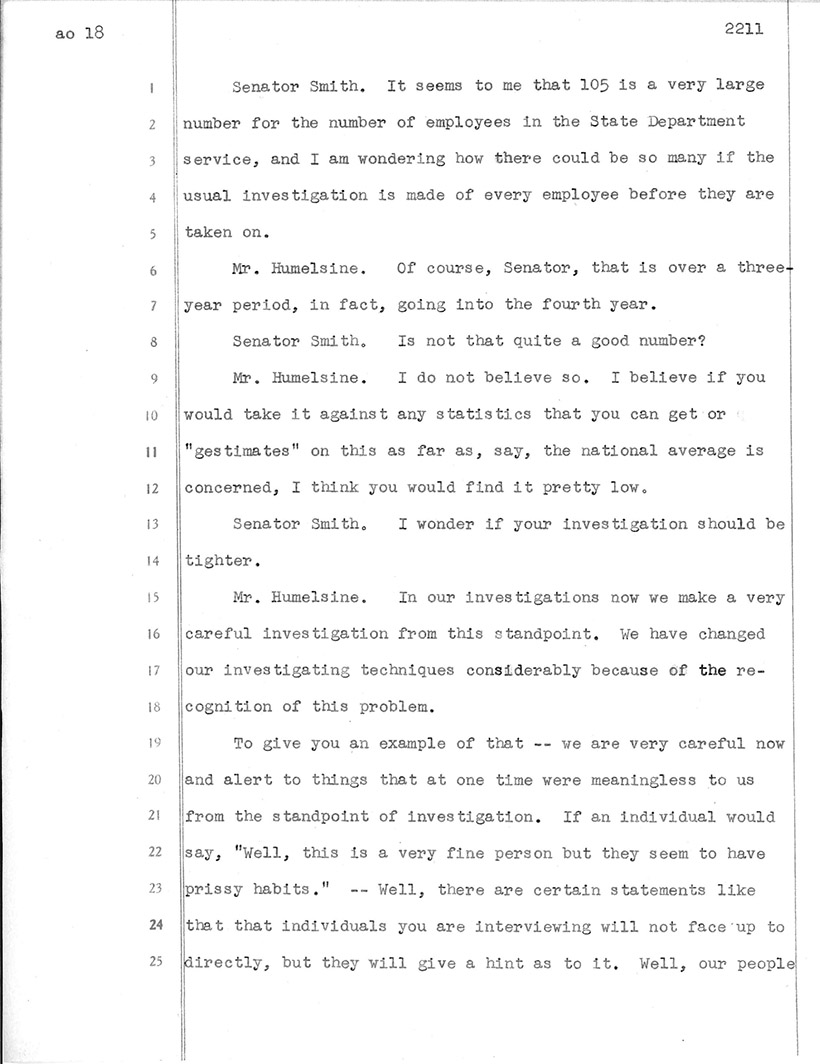
Increased government surveillance of employee behavior at their places of employment
Source: NARA’s Prologue Magazine
The next step was to intensify the investigation. Three more Republicans and three more Democrats were added to the Senate Committee, now chaired by Senator Clyde Hoey. The committee sent a survey to every branch of the military and civilian department asking their opinions on homosexual employees. Most agreed that homosexuals were unfit to serve in government roles.
At the committee hearings, the intelligence community, military, park police, and law enforcement communities were especially well represented. But a small number of agencies resisted these inquiries. Howard Colvin, the acting director of the Federal Mediation and Conciliation Service, said that he preferred to evaluate each case individually because homosexuals who led well-adjusted lives could make good employees. Jim Shovel, director of personnel at the National Labor Relations Board, blatantly refused to give the committee access to his files and was generally uncooperative. Completely unrepresented at committee hearings were gay men and lesbian women.
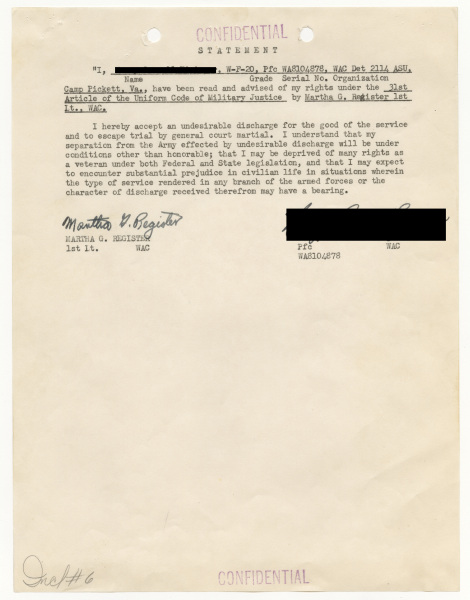
Dishonorable discharges for homosexual military members
Source: NARA’s Records of Rights online exhibit
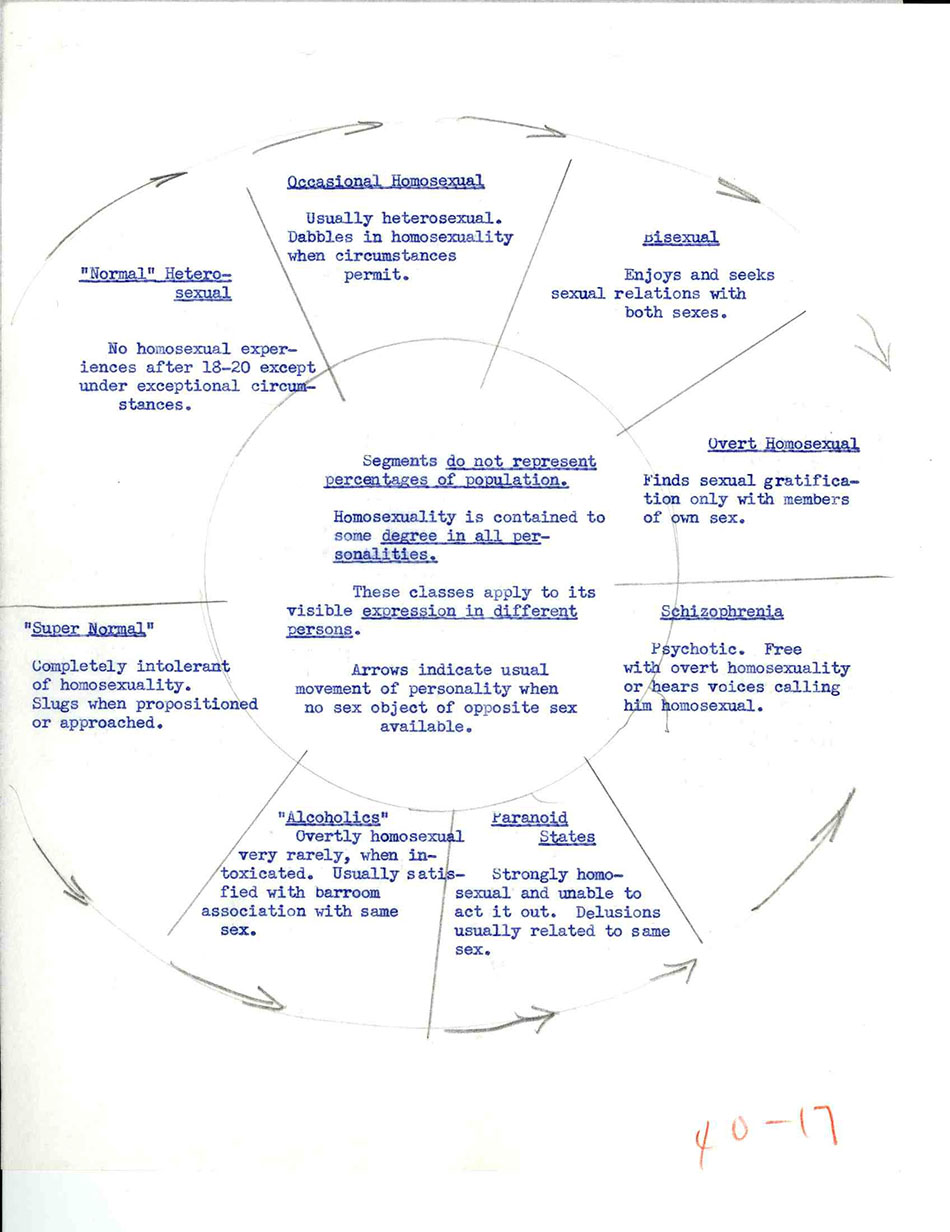
The “Lavender Wheel”, an exhibit submitted to Congress used to teach psych students at Georgetown
Source: NARA’s Prologue Magazine
In addition to testimony on fitness and security, the Senate committee also called doctors to testify on the medical aspects of homosexuality. Many of them spoke to the complexity of homosexuality and alluded to a spectrum. By 1952, homosexuality was added to the Diagnostic and Statistical Manual of Mental Disorders as a “sociopathic” condition, generating an incredible amount of stigma and discrimination.
As for using medical diagnoses for quickly identifying homosexuals in government employment, the Senators were disappointed. Senator Margaret Chase Smith asked, “There is no quick test like an x-ray that discloses these things?” “No, unfortunately,” the doctor replied, “it is a long interview affair.”
The Final Order
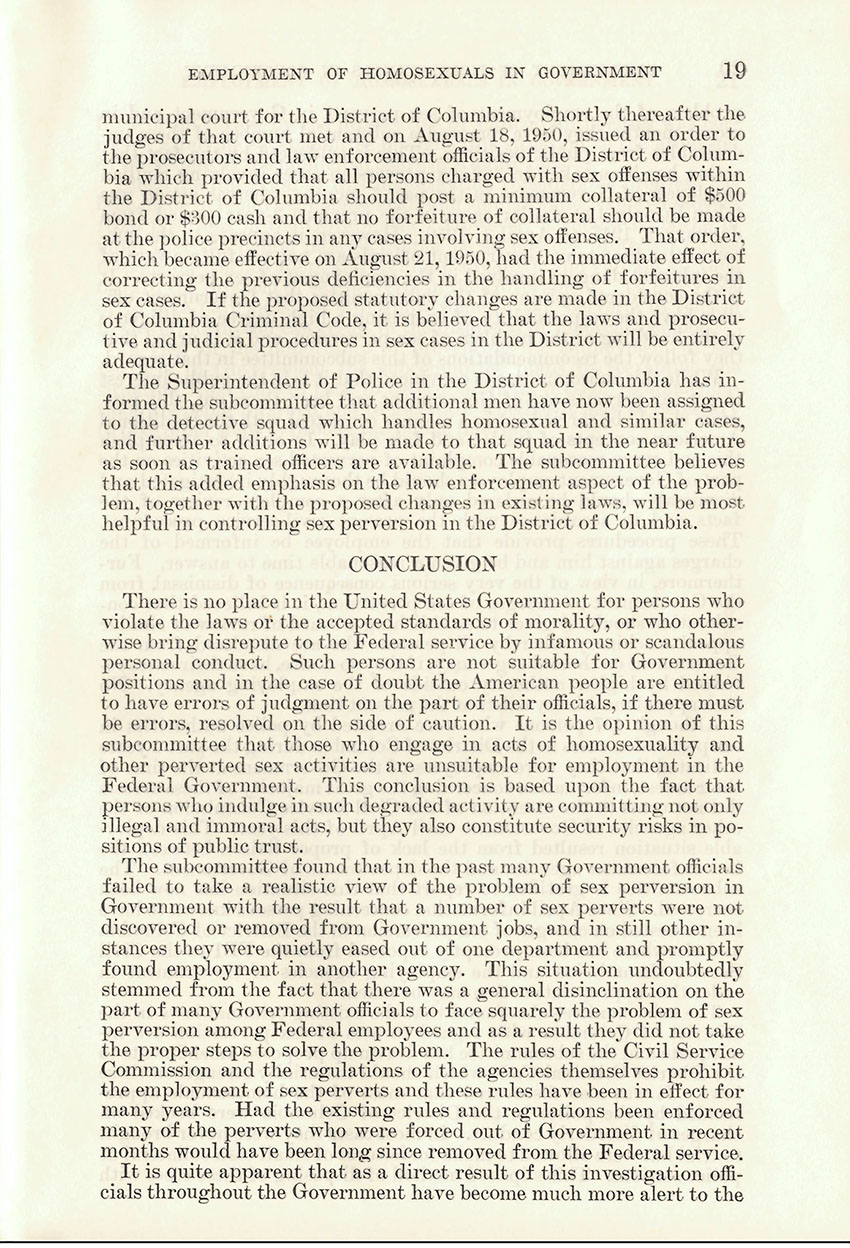
Congressional committee report conclusion, which excluded gay people from the federal government for decades
Source: NARA’s Prologue Magazine
The committee’s investigation went on for years and culminated in a report titled Employment of Homosexuals and Other Sex Perverts in Government, estimating that there were more than 5,000 homosexuals employed by the federal government. On April 27, 1953, President Eisenhower issued Executive Order 10450: Security Requirements for Government Employment. It labeled members of the LGBTQ+ community security threats and barred them from being hired for federal jobs.
It’s hard to determine the precise number of people who were adversely affected by EO 10450, but it’s estimated that between 5,000 and 10,000 LGBTQ+ individuals were either terminated or resigned from their jobs.

EO 10450: Security Requirements for Government Employment
National Archives Identifier: 28360664
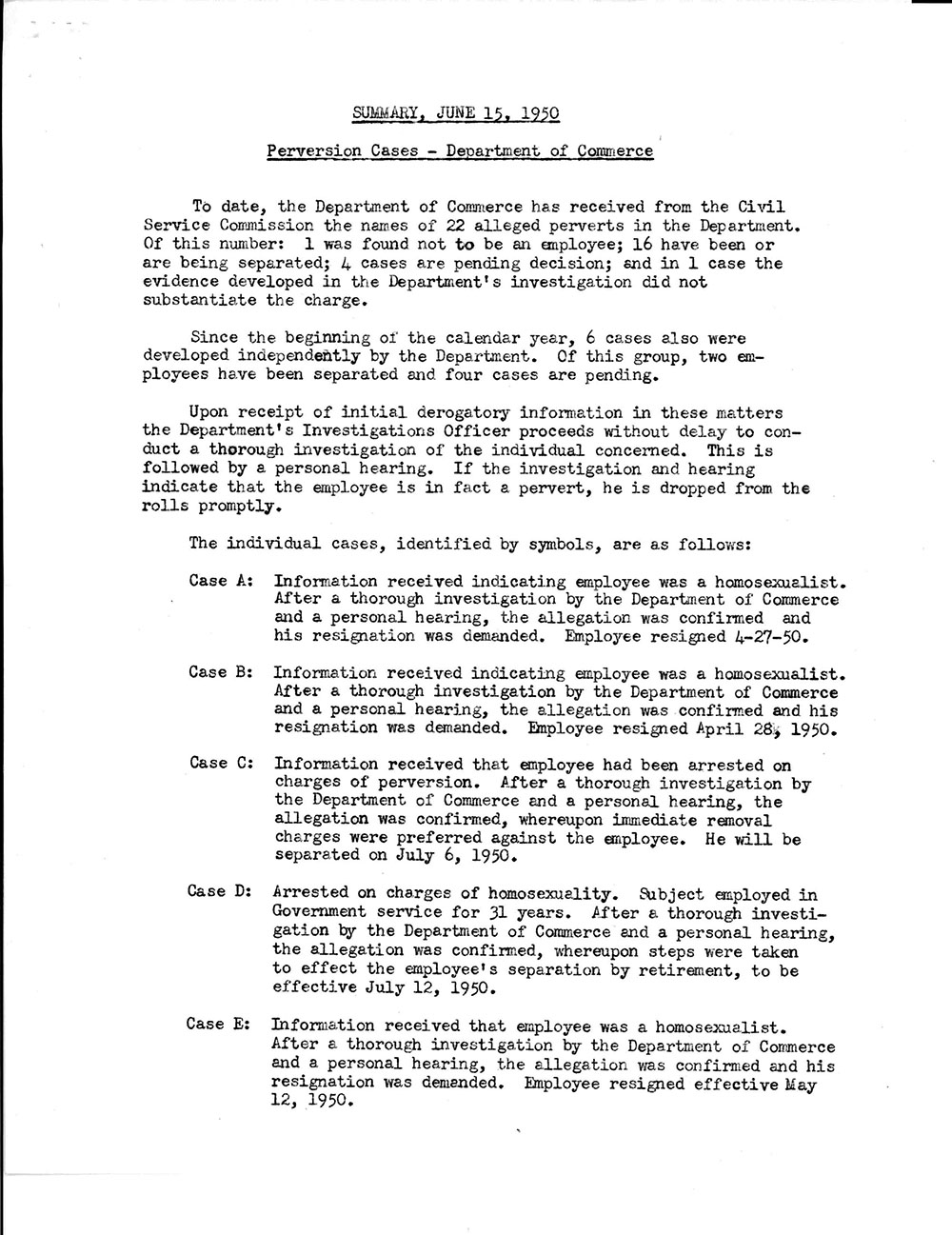
Memo on employees found to be homosexuals
Source: NARA’s Prologue Magazine
In 1973, the Supreme Court issued a ruling that homosexuality alone was not a reason to terminate a federal employee. In 1975, the Senate committee that investigated homosexuality in the federal government was officially disbanded. In 1994, gay service members were permitted in the military under the “Don’t Ask, Don’t Tell” policy, and automatic security clearance denial and revocation ended in 1995. In 2017, EO 10450 was finally repealed in its entirety by President Barack Obama on his final day in office.





